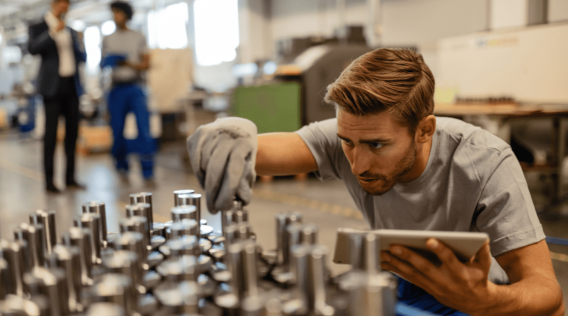Introduction
Aluminum casting is a widely used manufacturing process that involves the production of intricate and complex parts with excellent dimensional accuracy. The process involves pouring molten aluminum into a mold cavity and allowing it to solidify, resulting in the creation of high-quality aluminum casting parts. This comprehensive guide aims to provide a step-by-step overview of the aluminum casting process and highlight essential factors to consider in order to produce top-notch aluminum casting parts.
Step 1: Pattern Making
Pattern making is the initial step in the aluminum casting process. A pattern is a replica of the desired part that is used to create the mold cavity. It can be made from wood, plastic, or metal. The pattern should be dimensionally accurate and properly designed to allow for the shrinkage of aluminum during solidification.
Step 2: Mold Preparation
Once the pattern is ready, a mold is created around it. The mold can be made of various materials, such as sand, plaster, or ceramic. The mold should be strong enough to withstand the pouring of molten aluminum without cracking or deforming. The mold is divided into two halves, the cope, and the drag, to allow for easy removal of the pattern.
Step 3: Melting and Pouring
The next step involves melting the aluminum. Aluminum has a relatively low melting point, making it easier to work with compared to other metals. The molten aluminum is then poured into the mold cavity through a gating system. The gating system consists of channels and runners that facilitate the flow of molten metal and help prevent any defects or air entrapment in the casting.
Step 4: Solidification and Cooling
After pouring, the molten aluminum starts to solidify and take the shape of the mold cavity. It is essential to control the cooling rate to ensure proper and uniform solidification. Rapid cooling can lead to internal defects, while slow cooling can cause excessive shrinkage and dimensional inaccuracies. Various cooling techniques, such as using cooling fans or water cooling, can be employed to achieve the desired cooling rate.
Step 5: Shakeout and Finishing
Once the casting has solidified and cooled, it is removed from the mold through a process known as shakeout. The shakeout process involves breaking the mold to separate the casting from the mold material. The casting is then cleaned to remove any residual mold material and any rough edges or imperfections. Additional finishing processes, such as grinding, polishing, or painting, can be carried out to achieve the desired final appearance and surface quality.
Factors to Consider for High-Quality Aluminum Casting Parts
1. Alloy Selection: Choosing the right aluminum alloy is crucial for achieving high-quality casting parts. Different alloys have varying properties, such as strength, hardness, and corrosion resistance. Consider the specific requirements of the part and select an alloy that best meets those requirements.
2. Mold Design: A well-designed mold plays a significant role in producing high-quality aluminum casting parts. The mold should have proper gating and risering systems to ensure smooth metal flow and minimize the risk of defects. It should also allow for easy removal of the casting without causing any damage.

3. Process Control: Maintaining strict process control is essential for achieving consistent and high-quality casting parts. Monitoring and controlling parameters such as melting temperature, pouring temperature, cooling rate, and shakeout timing are critical to minimize defects and ensure dimensional accuracy.
4. Quality Assurance: Implementing quality assurance measures throughout the casting process is vital to producing high-quality parts. Regular inspections, testing, and documentation help identify any defects or deviations from the desired specifications and allow for corrective actions to be taken promptly.
Conclusion
Producing high-quality aluminum casting parts requires careful attention to every step of the process, from pattern making to finishing. By selecting the appropriate alloy, designing a well-structured mold, maintaining strict process control, and implementing quality assurance measures, manufacturers can achieve the desired results. With proper knowledge and expertise, aluminum casting can be a reliable and cost-effective method for manufacturing intricate and complex parts.
-

- Custom-made metal parts macbook middle board produced
-

- Tixomulační lití z hořčíkové slitiny odlévání dílů UAV
-

- CNC obráběné díly a komponenty
-

- Slévárenské díly z hořčíkové slitiny rám jízdního kola CNC obrábění a povrchová úprava
-

- OEM tlakově lité díly a komponenty
-

- OEM služby tlakového lití kovových součástí středního macbooku

 0086-750-5616188
0086-750-5616188 +86 13392089688
+86 13392089688 sales@zhongmei-tech.com
sales@zhongmei-tech.com







